Chapter 1, Part 6
In the late seventh century AD the Sailendras, a prominent patron of Shaivism (a sect in Hinduism), continued to grow as an important dynasty with a Sailendran queen, Shima, as the ruler of the kingdom of Kalingga in the northern coast of Central Java. According to the Tang dynasty accounts, the capital of Kalingga was surrounded by walls made of wood and during the reign of Queen Shima thievery was considered a serious crime for she valued honesty above other things. A few years later Sanna, another Sailendran king, ascended the throne and he would rule for only seven years.
The death of Sanna brought chaos and disunity to the kingdom, but in 717 AD a nephew of the deceased king claimed the throne and brought order back to the former realm of the Sailendras. The new king, Sanjaya, then established a new kingdom called Medang which would grow into a formidable power and dominate the political landscape of Java for the next three centuries. Before Sanjaya’s death after ruling the kingdom for four decades he requested his son, the crown prince, to take a drastic measure to secure support from the people: converting himself to Buddhism for the people of Medang considered the latter to be more pacifist by nature.
After the death of his father, Panangkaran, the new king who was now a Mahayana Buddhist, began in earnest the construction of Buddhist temples and monasteries particularly in Kedu Plain, a fertile region at the heart of Java where rice fields were in abundance thanks to the rich volcanic soil and the unlimited supply of water from all the rivers flowing through the plain, ideal to sustain the political center of the kingdom. One of the first temples built under the auspices of Panangkaran was Tarabhavanam, dedicated to the female bodhisattva, Tara, depicted as a figure of compassion and personification of virtues in Mahayana Buddhism. Along with the construction of the temple, a Buddhist monastery was also built, adorned with images of various bodhisattvas. Today they are known as Candi Kalasan and Sari, respectively.
There were remaining Shaivists within the Sailendra dynasty, a group some scholars referred to as the Sanjaya dynasty, who refused to embrace the new religion and continued practicing their worship of Shiva. However as the influence of Hinduism at the heart of the kingdom waned, they focused on the northern highlands instead, building many small temples on mountain slopes, including those at the slopes of Mount Ungaran, as well as extending the existing Hindu shrines throughout the region.
Today the shrines of Mount Ungaran are collectively called Candi Gedong Songo, ‘Nine Buildings Temple’. Despite the name, only five have been reconstructed while the rest remain as ruins. It is believed that the temples were built between the eighth and ninth centuries, around the same time with the beginning of the golden age for Mahayana Buddhism in Kedu Plain, heart of the kingdom of Medang.
Traces of Shaivism are evident particularly at Gedong III and V. Reliefs of Durga Mahisasuramardini, Ganesha and Agastya on their outer panels are unmistakably Shaivist (all the three are always associated with Shiva). Meanwhile Kala and Makara, creatures in Hindu mythology, adorn almost all of Candi Gedong Songo’s facades, as well as that of Candi Kalasan in the south, an example of how a new religion adapt with elements of the local culture.
The Sanjayas, or Hindu Sailendras, found their influence shifted to the north. Meanwhile fifteen years after Panangkaran converted into Buddhism and became the king of Medang, his successor would not only send chills down the spines of the Sanjayas, but also other kingdoms in the region as far as Champa in modern-day southern Vietnam. A new chapter of rivalries among powers in the region had just begun.
Click here for the full list of stories from the Spice Odyssey series.
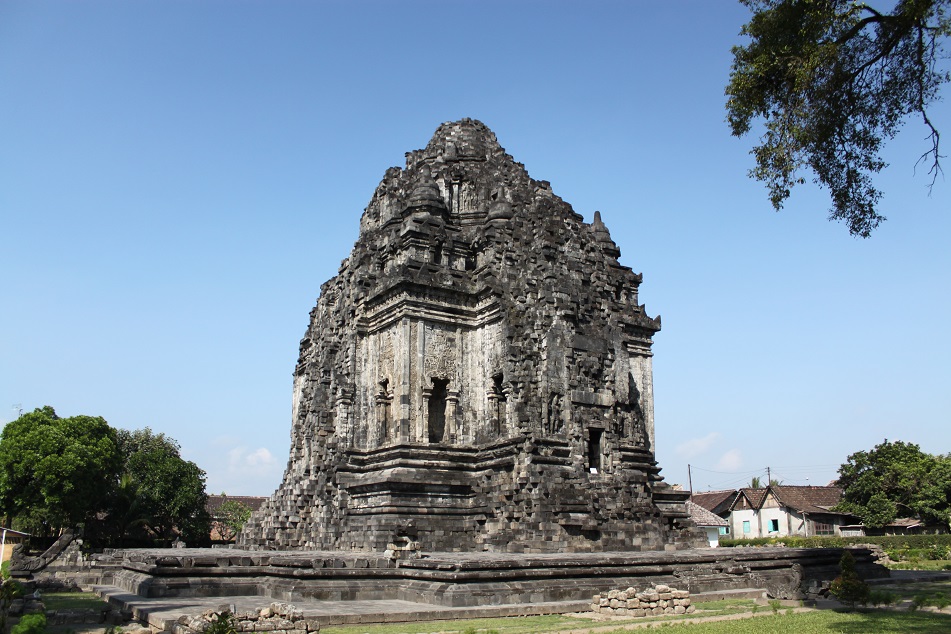
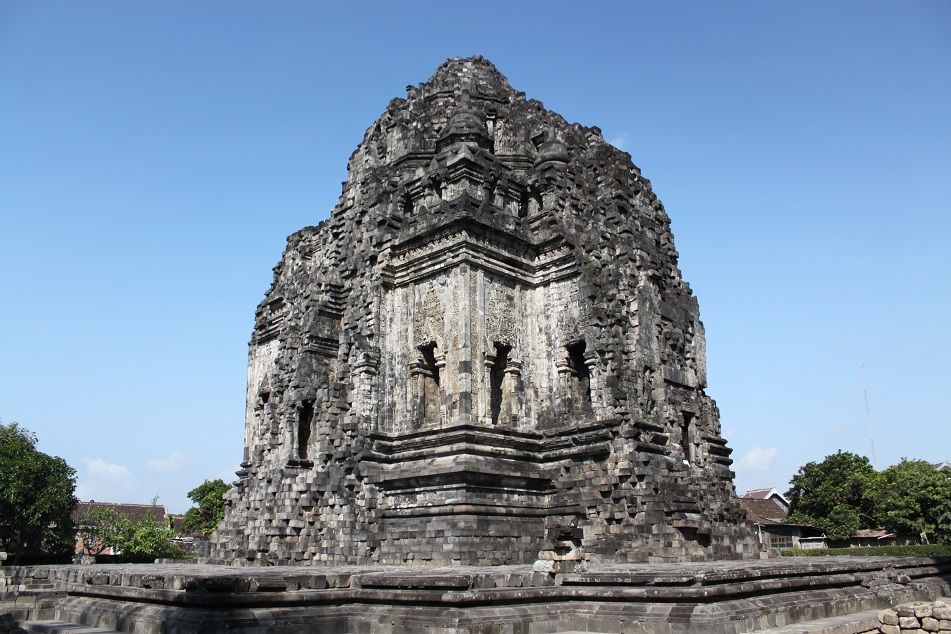

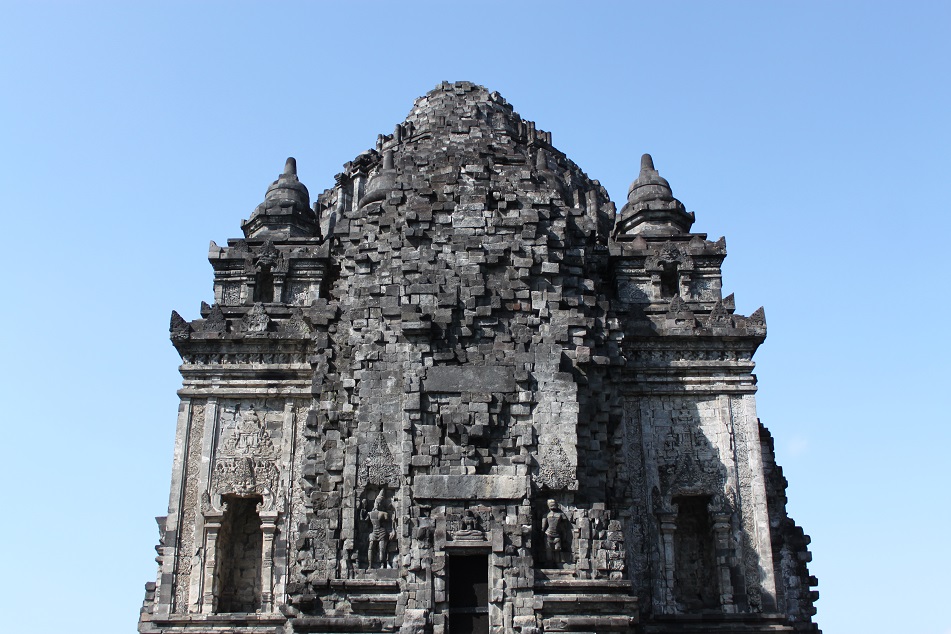
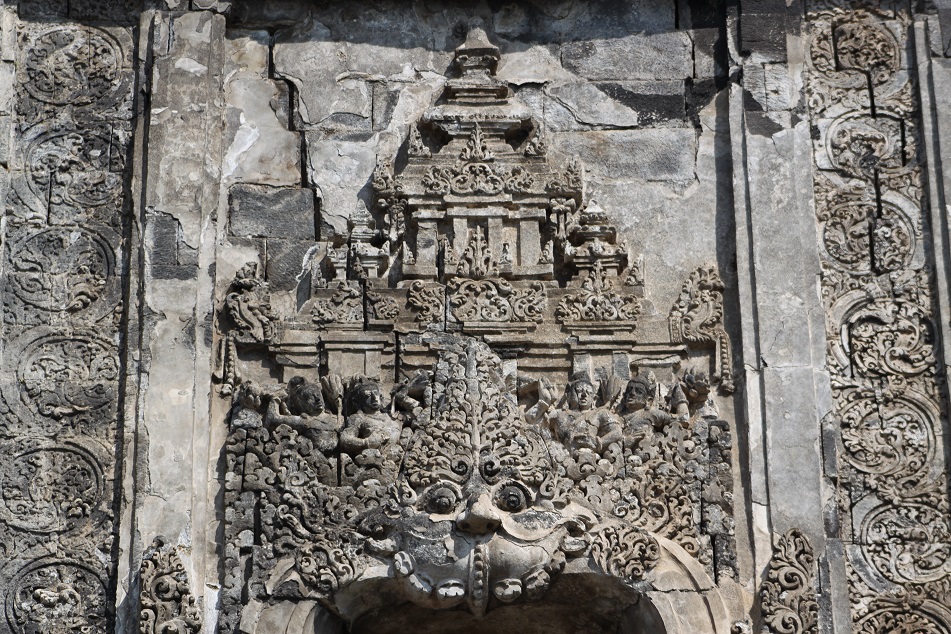
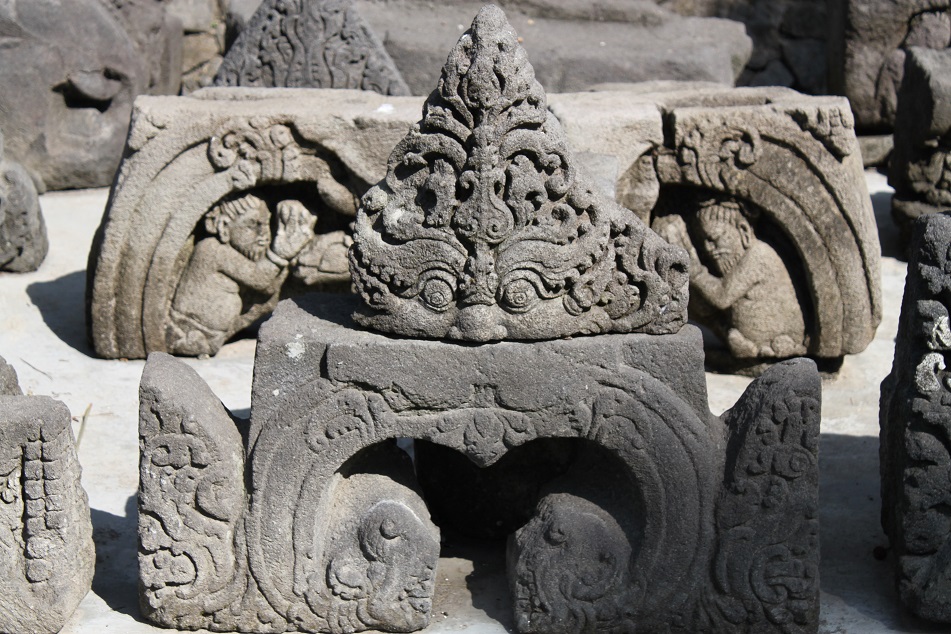
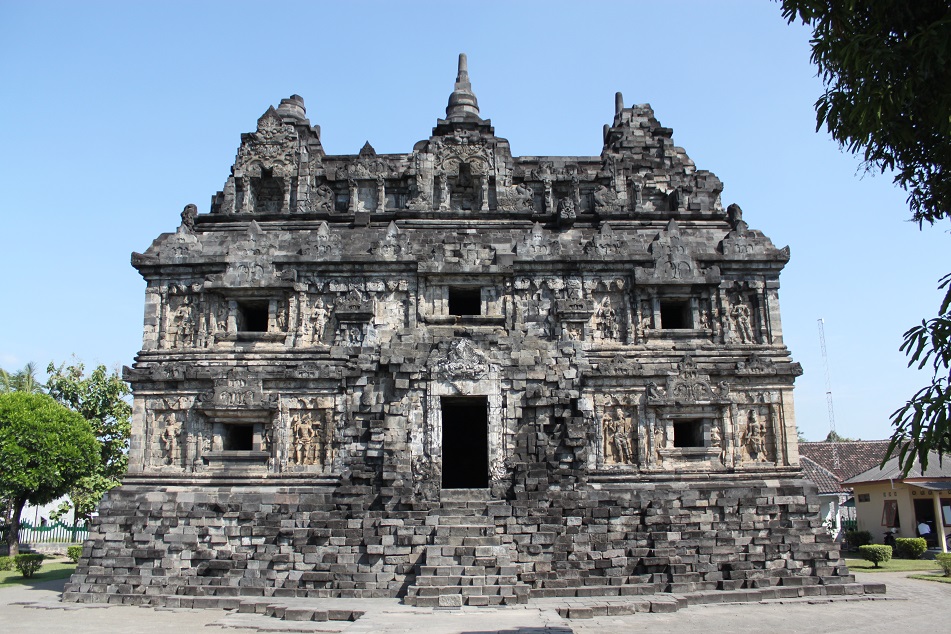
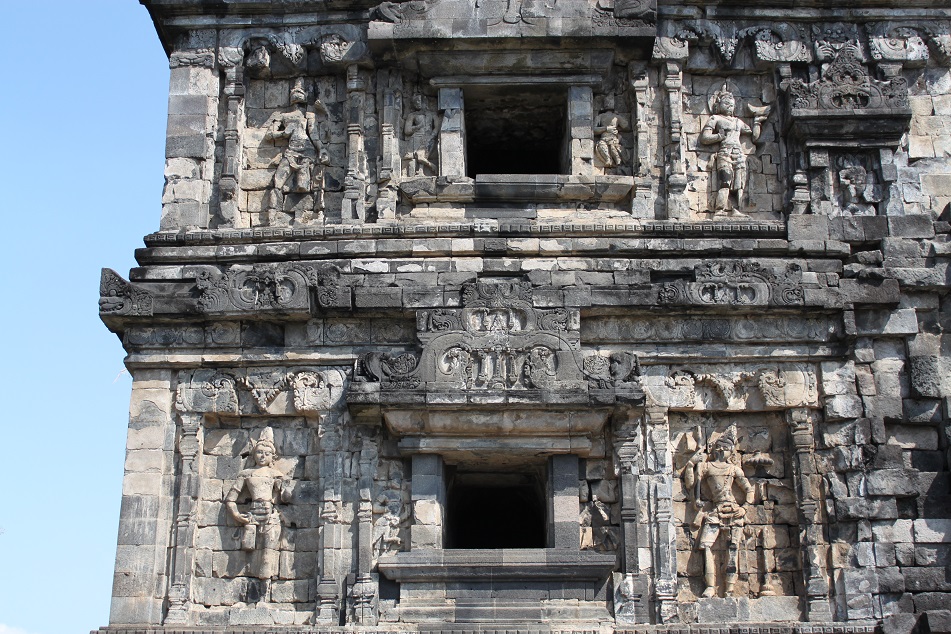
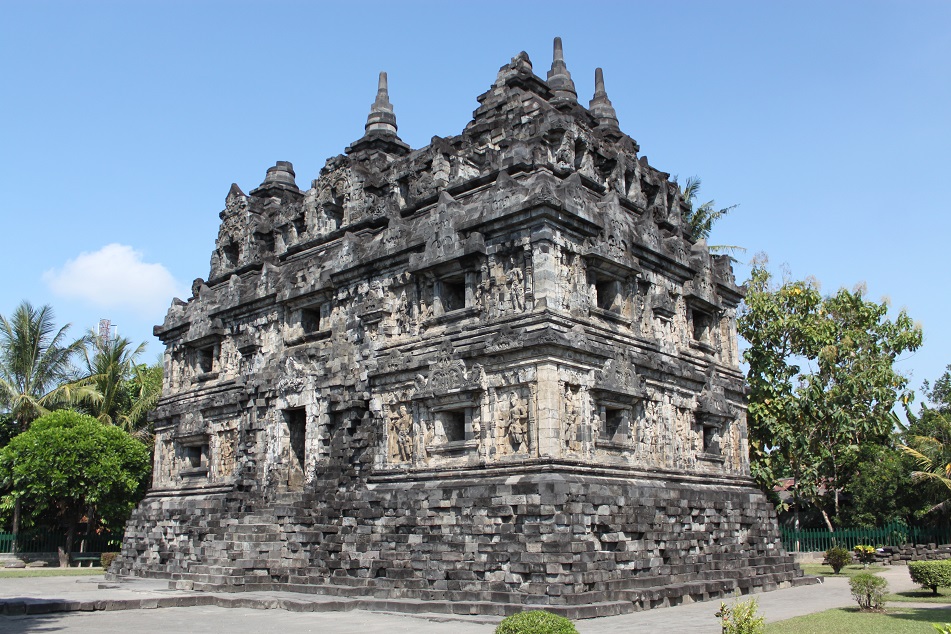
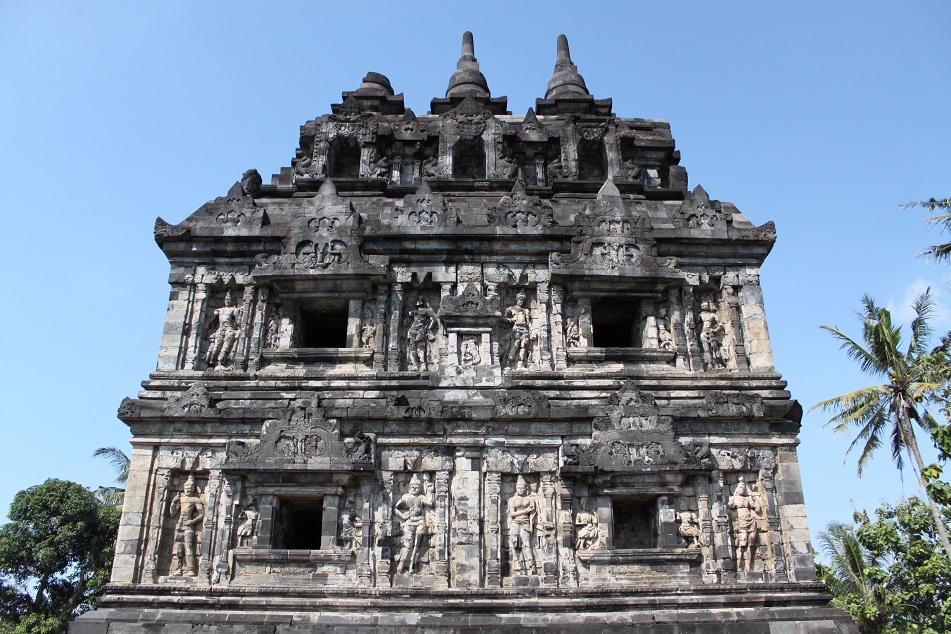
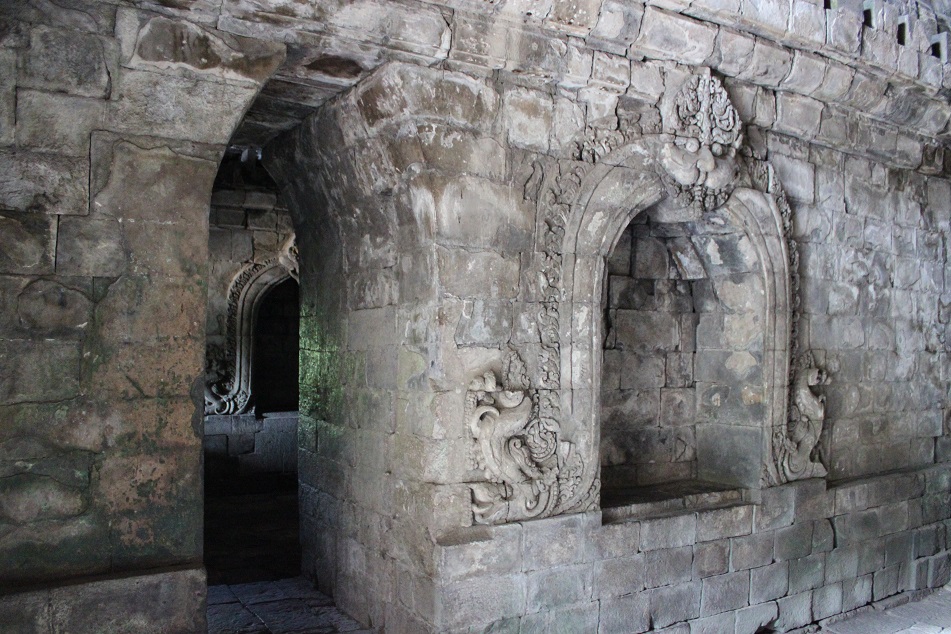
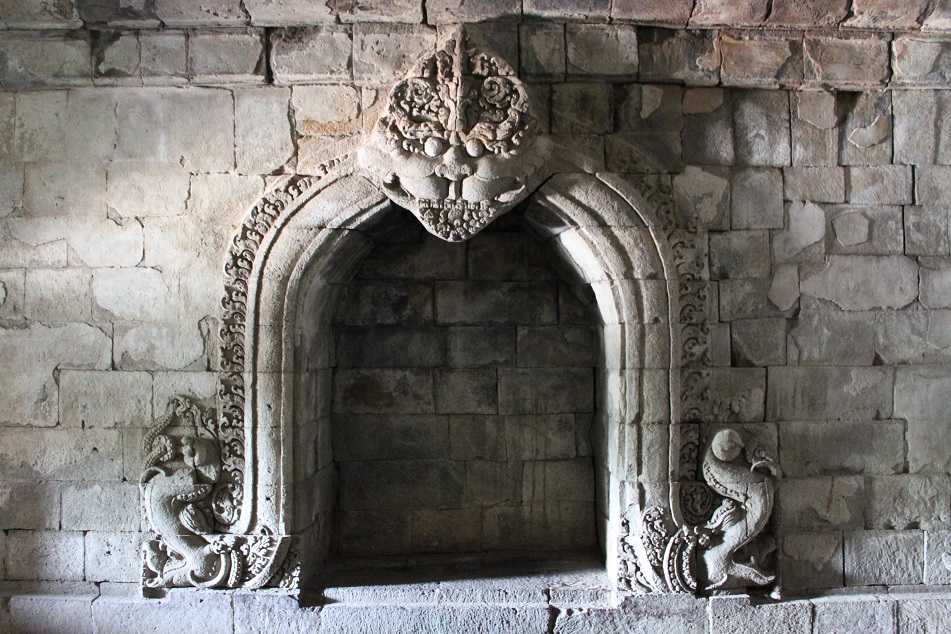


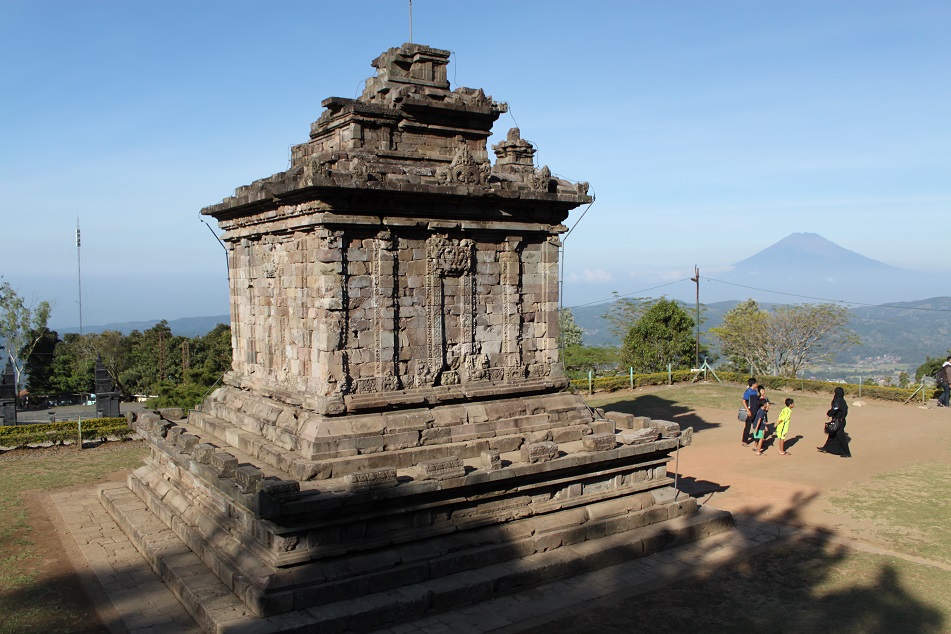
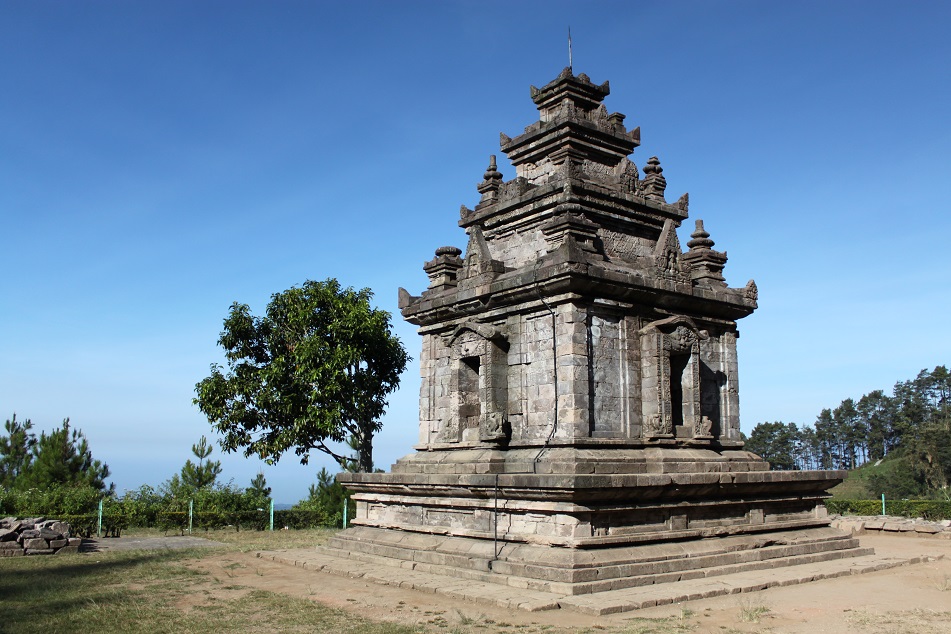
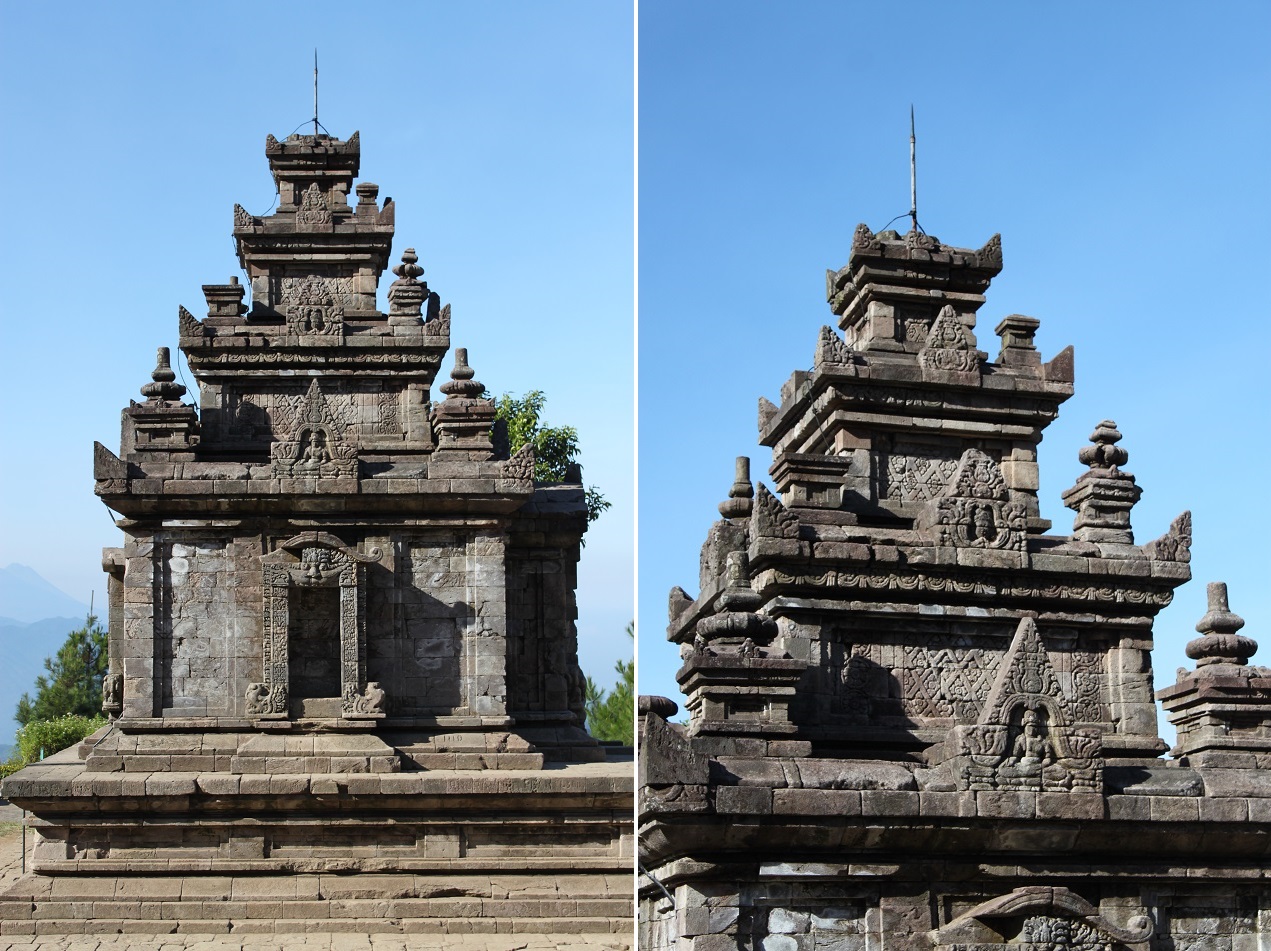

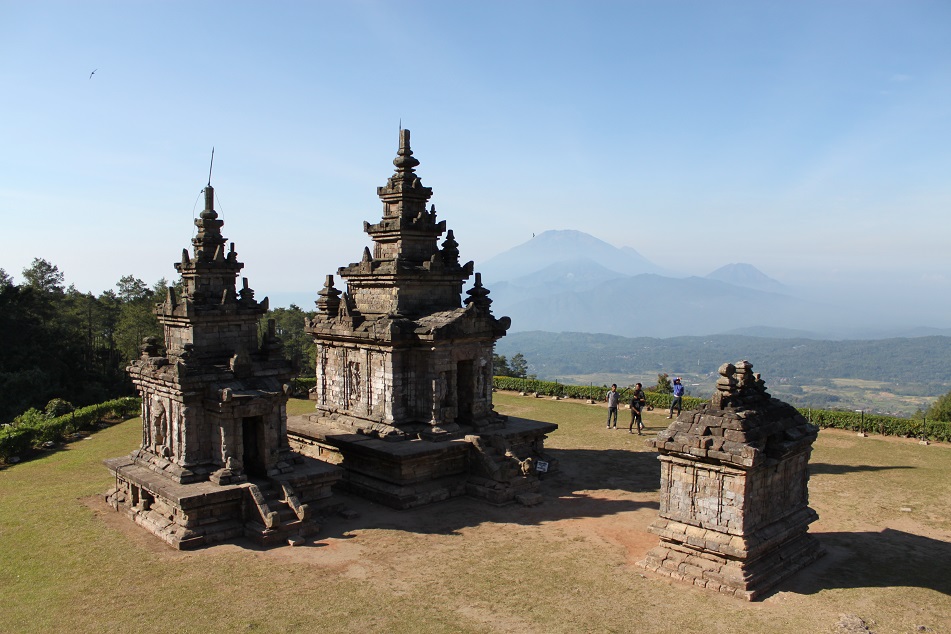
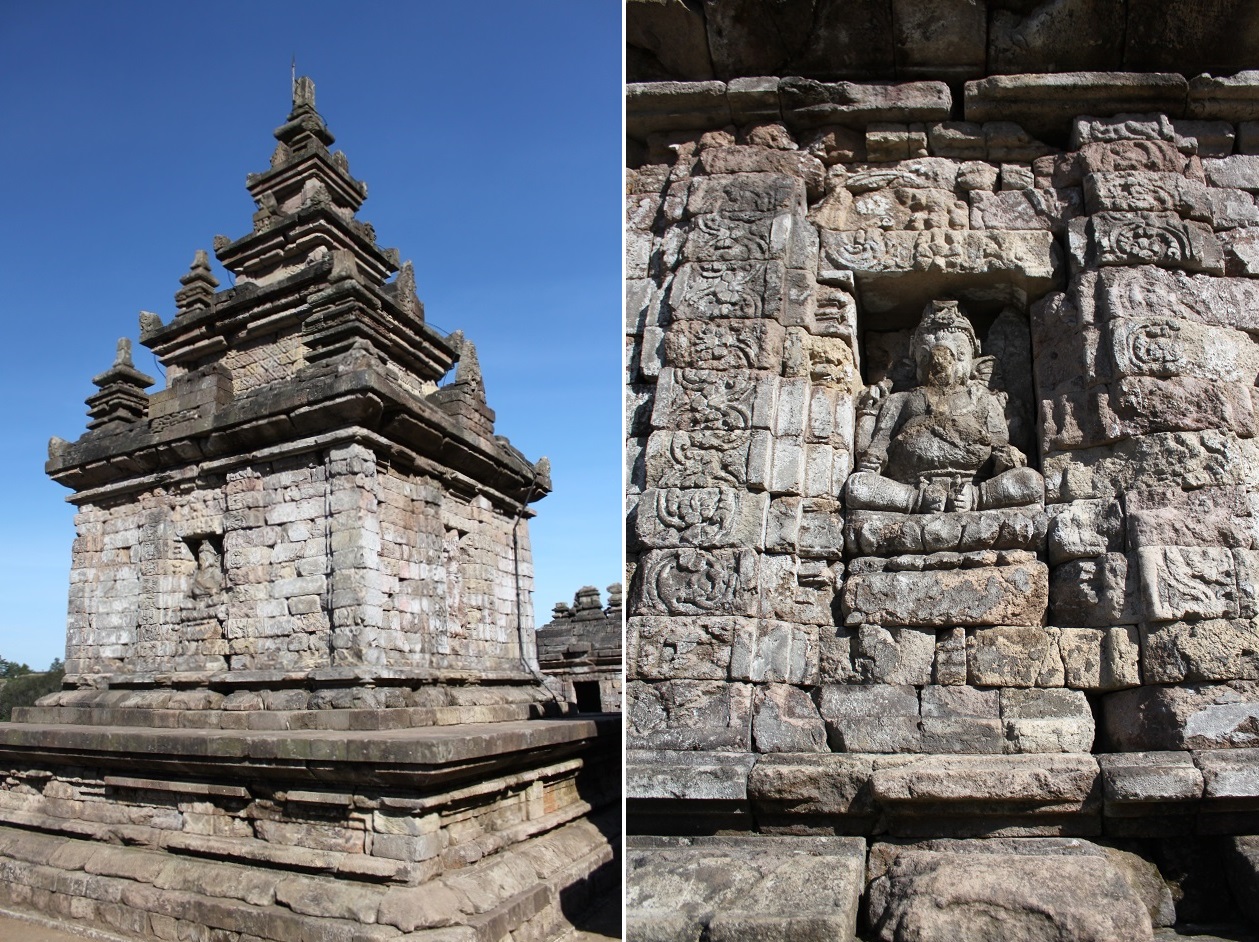
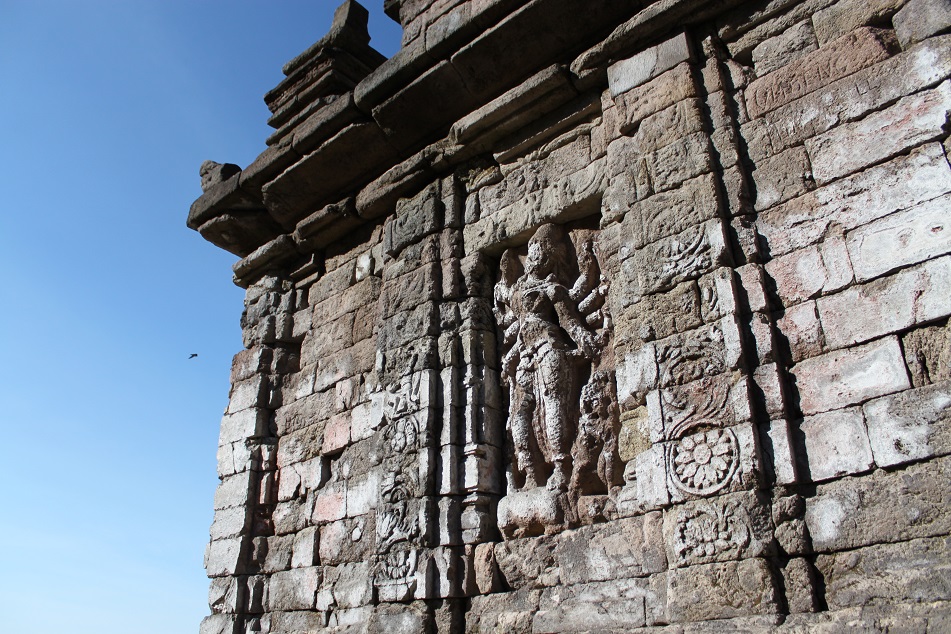
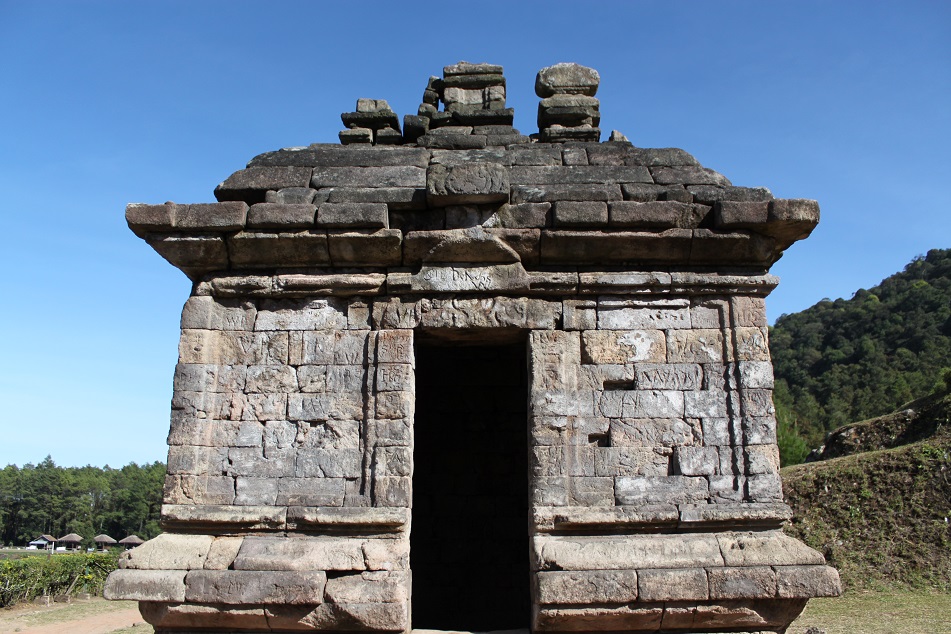
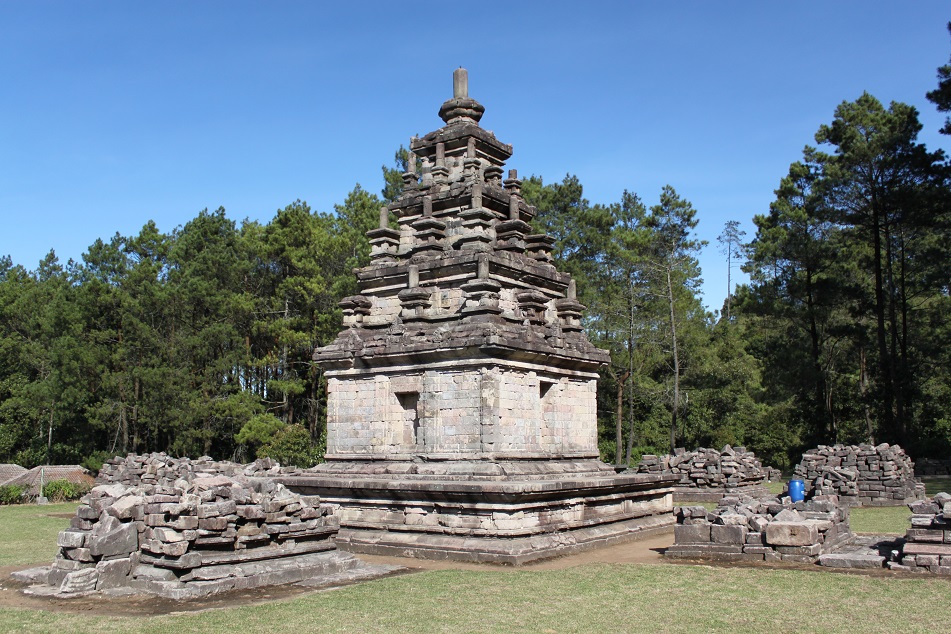
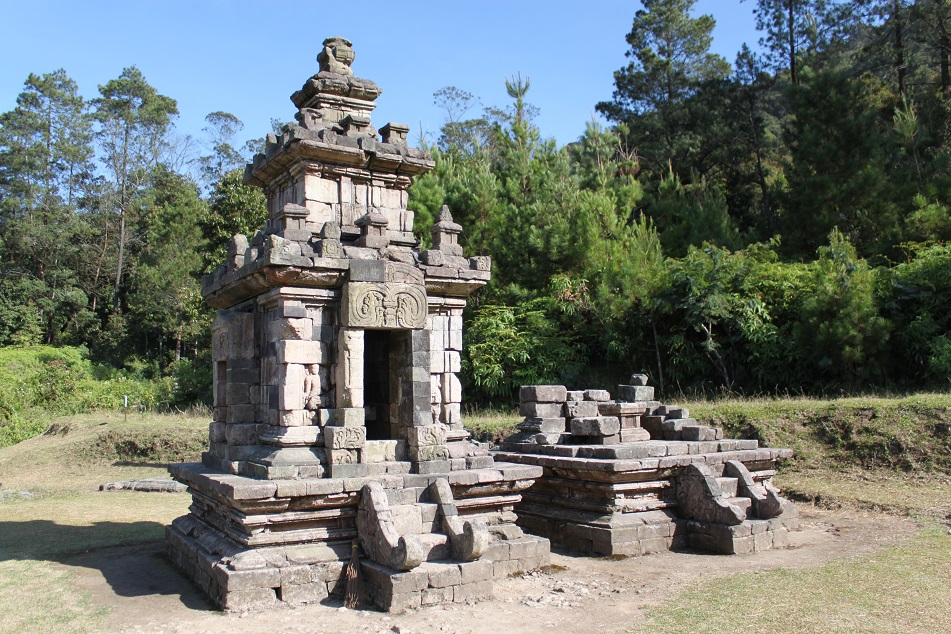
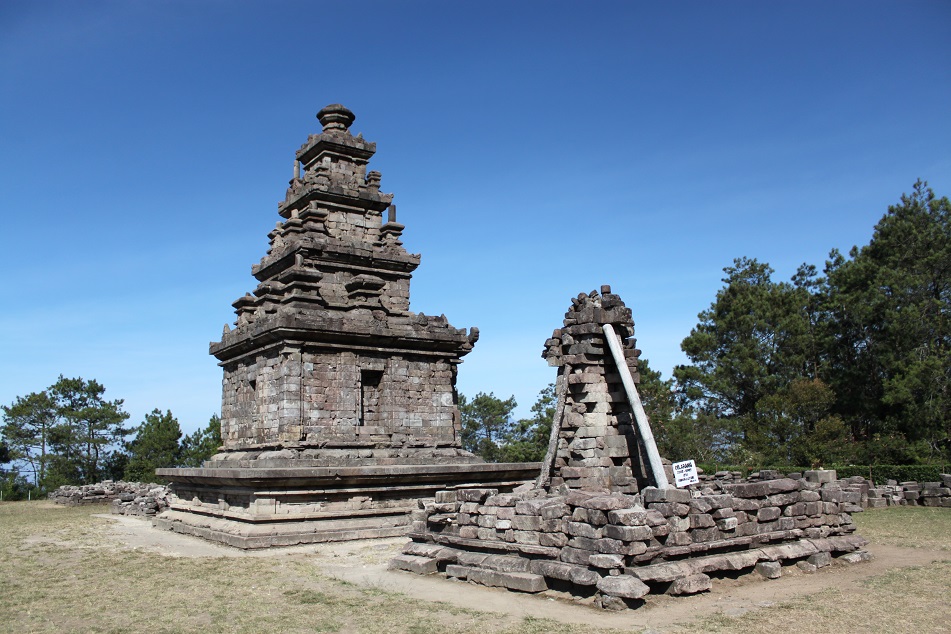
Buddhism is interesting:)
LikeLiked by 1 person
Check out my blog when you get the chance 🙂
LikeLike
Suka sekali dengan semua foto-fotonya, ceritanya… seperti jalan2 kesana lagi..
Btw, boleh nebak gak..? itu foto2nya sekitar jam 8-9 pagi kah? Aku suka biru langitnya dan cahayanya yang nyaman…
And kayaknya harus nyambung ke champa niii… hehehe..
LikeLike
Makasih banyak. 🙂 Wah tebakannya jitu! Foto-foto di Candi Kalasan saya ambil sekitar jam 9:30 pagi, kalau yang di Candi Sari sekitar jam 10:30. Naaah itulah makanya kenapa saya sekarang penasaran banget sama Champa. One trip leads to another. 🙂
LikeLiked by 1 person
Tapi kondisi candi2 Jawa, dibandingkan dengan candi-candi di my son, sangat jauh lebih indah. Krn candi2 champa di my son masih banyak yang terbengkalai apalagi diperparah hasil perang vietnam awal tahun 70-an. Aku trenyuh sekali krn ada satu kompleks candi rata dg tanah krn di bom. Dan disitu juga masih ada kawah bom dengan diameter 3meteran hanya berjarak 2 atau 3 meter dg bangunan candi yang selamat dan masih berdiri. Sepertinya masih banyak yg harus dibenahi di tempat itu 😥
LikeLike
Iya, setelah lihat foto-foto My Son di internet memang kelihatan kondisinya kurang prima. Manusia membangun peradaban, manusia pula lah yang menhancurkan peradaban. Ironis memang. Semoga peninggalan-peninggalan purbakala di Vietnam bisa terus dijaga dan malah yang hancur bisa direkonstruksi supaya orang-orang bisa mempelajari hubungan antarbangsa di kawasan Asia Tenggara pada masa lalu.
LikeLiked by 1 person
Wow, absolutely spectacular. The views look breathtaking. I have followed so I can read more, your stories are fascinating.
http://www.lizzysprettythings.co.uk
LikeLiked by 1 person
Thank you, Lizzy. Despite their small sizes, those temples in Java’s highlands have a really magnificent setting. Thanks for following! I’m glad you enjoyed my blog posts.
LikeLike
Quite fascinating. Thank you.
LikeLike
Thank you for reading, Miriam.
LikeLiked by 1 person
My pleasure
LikeLike
Great photos of a fascinating island with the remnants of different religions
LikeLike
Thanks Mallee. If you go to Indonesia and are more interested in history, probably Java is the island you should explore more for its fascinating historical sites dating back to more than 1,000 years.
LikeLiked by 1 person
Bama, always impress how you know the details of places you have visited! Well written post 🙂
LikeLike
Thank you, Indah. I love doing research before, during, and after a trip. I am, too, impressed by your knowledge of marine life, and your amazing underwater shots!
LikeLike
I love the blue… it’s so beautiful. Scholars have said that Kalasan is one of the most beautiful temple ever built, too.
That’s Syailendra–the kings of mountains. Oh, I couldn’t believe that they were very powerful. Maybe Java has destined to be the capital of Southeast Asia from the 8th century :)).
Great post!
LikeLike
Matur suksma, Gara. Too bad Kalasan can never be rebuilt to its former glory since many stones had been stolen or used by the locals for other purposes. However we surely can still see a glimpse of its past beauty. Well, the ‘capital’ of Southeast Asia is indeed in Java — ASEAN’s secretariat is in Jakarta. 😀 Hehe…
LikeLike
The ruined state of Candi Kalasan makes me wonder how it looked before restoration. It must have been a laborious, painstaking process. I have a feeling the missing plinth at Candi Sari was probably taken apart for its stones. It is remarkable that the wondrous carvings on both ancient structures were not pillaged. As for Gedong Songo, it was special because of its magnificent setting – again, the archaeologists have done a superb job putting the pieces back together. Thanks for taking me to all these temples!
LikeLike
You know, that makes me think. People in the past took the stones from both candis (also other candis) for practical purposes — building houses and other structures. Maybe that’s why they didn’t really care about the carvings. Today, fueled by the high demand for ancient artifacts in the world’s art market, it would be a different story. Speaking of archaeology, I think Java is a great place for archaeologists. About a month ago I found a blog focusing on the archaeological sites of the ancient Mataram kingdom: https://ancientmataram.wordpress.com/. It’s fascinating to know there are so many temples scattered across the island! My pleasure, James. And makasih for reading.
LikeLiked by 1 person
Great photos Bama!
LikeLike
Thank you, Cristina. I’m glad the skies were really blue that morning.
LikeLike
As others have said, the setting of these temples is stunning. Indonesia is such an underrated country I think. Where else can you get all this history with stunning beaches and volcanoes?
LikeLike
Sometimes I wonder if it’s better to keep it underrated. 🙂 Any plan to visit Indonesia again soon, Jeff?
LikeLike
Maybe. We will have some time to travel in June for about a month. From what I can tell, the weather should be pretty good then across Indonesia. We didn’t go to Sumatra last time I’m interested in going there. Any advice?
LikeLike
June should be great, and this year Ramadan starts in early June — it should be interesting to travel in Sumatra during Ramadan. I would suggest Weh (a small island off the northern tip of Sumatra known for its beautiful snorkeling sites) and Samosir (an island in the middle of Lake Toba where you can find Batak traditional villages). I have never been to Nias but from what I read it’s a very interesting island too. Palembang in the south is industrial but James and I really liked it, and I loved the food!
LikeLike
I think you just convinced me to go to a non-Muslim area during June. I don’t think I can handle Ramadan. I need to eat like 7 times a day. I’ll check those places out though just in case. Thanks for the tips.
LikeLike
Hahaha.. 😀 Samosir and Nias are predominantly Christian though.
LikeLiked by 1 person
Another great read. I truly like how you spice the history. The photos speak for themselves!! What a great place. And the volcanoes in the distance…make me want to travel back in time to see what the place looked like when it was hopping. I’m wondering if Tara is Green Tara or White Tara? Or if they are the same? Or a different Tara altogether?
LikeLike
Thanks Badfish. Please bear with me — Chapter 1 will be quite a long one since I want to provide adequate information on the ancient sites of this part of the world before the spice race began. Both Green and White Tara are actually the same. The color represents the qualities of the Buddha, and as far as I know there are Tara in other colors as well.
LikeLike
Hey Bama!
Man its been too long. I’m picking up blogging again and currently am returning to all the blogs I used to love following to see what they’ve been up to. Glad to see you’re still traveling and loving life! Man, those photographs are awesome (I looove the layers of volcanos!). Just wanted to drop by to say Hi again. Looking forward to reading more from you (and catching up over the last 3 years)!
– Nate
LikeLike
Nate!!!
Wow, it’s been so long. A few weeks ago I actually checked your blog and wondered where you’d gone. Glad to have you back in the blogging world! I returned from a six-month trip last month and just yesterday I started a new job. No new travel plans so far, but we’ll see. Thanks for dropping by again — I can’t wait to catch up with your stories on your blog!
LikeLike
Dari beberapa artikel yang aku baca, di sini aku baru dapat penjelasan yang lebih lengkap tentang Gedong Songo. Karena rata-rata menyatakan bahwa pembangunannya masih belum jelas, baik oleh siapa dan untuk apa, selain memang terkait dengan pemujaan Shiwa. Begitu pula dengan jumlahnya, apakah benar-benar sembilan, atau bisa lebih dari itu. Terlepas pada saat ini hanya lima candi yang berhasil direstorasi.
Buatku Candi Gedong Songo menantang untuk dikunjungi, karena letak kompleksnya yang berada pada lereng gunung, bukan dataran seperti candi-candi lainnya. Lumayan lah buat latih betis ya 😀
Nice post Bam! *jempol*
LikeLike
Cari info mengenai Gedong Songo memang gampang-gampang susah sih, karena sebagian besar sumber informasi di luar sana kurang menjabarkan detil kompleks percandian ini. Ini kalo gak salah aku sampe baca beberapa e-book sebagai referensi. Kalo ada info tambahan boleh di-share juga yaaa, supaya rasa penasaran kita semua sedikit terobati. 🙂
Aku ke Gedong Songo dua kali. Yang pertama tahun 2013 dan pas aku lagi gemuk-gemuknya, jadi kebayang kan butuh sedikit perjuangan untuk menyusuri jalan setapak untuk mengunjungi kelima candi Gedong Songo? 😀 Untungnya pas kunjungan kedua aku jauh lebih fit, dan datangnya lebih pagian.
Makasih Bart!
LikeLiked by 1 person
Boleh-boleh, kalau ada info tambahan nanti aku share. Tapi rasanya aku harus balik lagi ke Gedong Songo, soalnya waktu ke sana gak bawa kamera. Cuma bawa hape aja, itu pun baru sebentar foto-foto sudah keburu mati karena low bat.
Aku kok curiga ya, pas yang pertama dirimu nyewa kuda buat nyusurin Gedong Songo 😀
Btw Bam aku agak bingung dengan penceritaanmu tentang Dinasti Syailendra dan Sanjaya di sini. Kesannya Sanjaya adalah kelanjutan dari Syailendra. Sementara yang aku baca-baca dari referensi lain, pada awalnya dinasti Sanjaya adalah penguasa tanah Jawa, dan Syailendra masuk karena mendapat perlindungan dari Shima/Sanna. Di kemudian hari Syailendra menjadi rival Sanjaya (mungkin semacam AS & Soviet pada masa perang dingin). Yang kemudian mereka baru disatukan kembali setelah Rakai Pikatan dari keturunan Sanjaya menikah dengan Pramodawardhani yang merupakan keturunan Syailendra, dan mereka menghasilkan candi Plaosan yang fotogenik itu. Untuk hal ini, aku paling mengingat dari tabel yang dijabarkan Pramoedya Ananta Toer di bagian lampiran roman Arok Dedes.
Boleh dong aku dishare sumber dari artikelmu di atas, untuk perbandingan. Soalnya memang menarik menelisik jejak era Mataram Kuno ini.
Makasih jugaaa 🙂
LikeLike
Hahaha, gak lah. Aku terakhir naik kuda itu pas waktu masih di Pandeglang. Waktu itu naik kuda di pantai. 😀
Nah untuk sejarah pasti asal usul Syailendra dan Sanjaya sebetulnya ada banyak teori karena bukti sejarah tertulis yang lengkap mengenai kedua wangsa tersebut memang sangat terbatas. Jadi teori yang ada didasarkan kepada prasasti yang sudah pernah ditemukan dan dari riwayat yang ditulis pada zaman dulu. Kemudian ahli sejarah membuat teori masing-masing. Untuk prasasti mengenai dinasti yang berkuasa di Jawa banyak yang mengacu ke Sojomerto dan Canggal, sedangkan untuk cerita biasanya menggunakan riwayat yang tertulis di Carita Parahyangan. Untuk interpretasi ahli sejarah yang paling banyak digunakan di antaranya adalah karangan Georges Coedes dan Poerbatjaraka. Tapi kalau dilihat dari runutan waktu berdasarkan prasasti Sojomerto dan Canggal, nama Selendra (Syailendra) lebih dulu disebut dibanding Sanna dan Sanjaya, sehingga berdasarkan hal tersebut lah sebagian ahli sejarah menafsirkan bahwa Sanjaya muncul setelah wangsa Syailendra berdiri. Nanti di post-post berikutnya aku lanjutkan mengenai hubungan antara Sanjaya dan Syailendra ini. Untuk salah satu referensi yang aku baca klik di sini.
LikeLike
*langsung bayangin Bama naik kuda di pantai*
Makasih penjelasannya Bama. Soalnya aku masih sering terbingung-bingung dalam memahami era Mataram Kuno ini, artikel yang ada kadang kontroversi. Mungkin karena banyaknya teori dan spekulasi yang digali dari sumber-sumber yang bertebaran ya. Siiip, jadi nambah referensi lagi nih 😊
LikeLike
Bayangin kudanya aja 😀
Sama-sama Bart. Banyak banget sumber yang bisa dibaca mengenai Mataram Kuno memang. Butuh mata kuliah khusus sepertinya. 🙂
LikeLiked by 1 person
Hahahaha 😀
Yup, harus lebih banyak baca. Enaknya sih kuliah sambil nengok lapangan langsung ya, pasti seru. Ya kaya kita gini, langsung jalan ke lokasi. Ditunggu lanjutan ceritamu Bama. *anteng mantengin*
LikeLike
Kuliah, sambil nengok lapangan, terus belajar arkeologi juga, terus ngulik-ngulik tanah dan nemu peninggalan purbakala. *kebanyakan ngayal*
Sip, thanks Bart. Semoga bisa cukup bersabar sama cerita-ceritaku mengenai percandian di tempat-tempat yang aku kunjungi waktu trip kemarin. 😀
LikeLiked by 1 person
Siap! 😉
LikeLike
You are such a splendid your guide with your knowledge, ability to create such interest with your words ~ and then, of course, your wonderful photography. Beautiful post, Bama.
LikeLike
Thank you again for your kind and encouraging words, Randall. Thanks to those inspiring places, writing about them is essentially conveying the inspirations I got and knowledge I learned into words.
LikeLike
Interesting post my friend. I wonder whether the Kalinga mentioned here have any connection with Kalinga which is present day Odisha.
The brick work in the 4th pic gives a pixelated effect…super cool
LikeLike
That is exactly my thought when I learned about Odisha’s Kalinga and Java’s Kalingga. Maybe it was pure coincidence, thanks to the many loan words Javanese got from India, as the former existed more than eight centuries before the latter.
I didn’t think of the pixelated effect, but now I can see it. 🙂 There’s always beauty behind imperfections. Thanks Sreejith!
LikeLike
Wonderful article, thank you!!!
LikeLike
Thank you for reading, Katerina.
LikeLike
Menarik sekali!! Kalasan looks sooo different now! More fragile …..it was more than 20 years ago that I visited! I love the vistas of gunung gunung api…. indah banget!! Sooo much sejarah. Makasih dan salam dari Trees
LikeLike
In spite of its location just a few meters off the main road, only a few people visit this temple. Hopefully Kalasan will stand another century (and even more) because it is truly a unique heritage site. For me one of the fun things about taking landscape photos in Indonesia is that there will always be volcanoes in most places I go. Makasih sudah baca, Trees.
LikeLike
nice post…It seems you have a good understanding of all religion
LikeLike
Thank you, Shweta. I’m lucky to have grown up in Indonesia, especially Java where elements of animism, Hinduism, Buddhism, and Islam mix and shape the complex, eclectic culture on the island.
LikeLiked by 1 person
Allow me to add some informations :
For the question from Badfish : It was Vasya-tara from Green Tara group.
Identified from the throne in main chamber which the statue should be sitting in ‘European sitting posture’ as in Candi Mendut’s central statue.
Except for the statue in the main temple chamber, the total number of statues in the other temple chambers is 21, exactly the same number that was mentioned in connection with Atlsa’s role in
the dissemination of the cult of
the 21 Taras in Tibet.
(Jordan, Roy, The Tara Temple of Kalasan in Central Java, 1998)
Ceritayanti : mentioned about My Son Complex. Your picture of KalaMakara in Scattered Fragments of The Temple is an example how Java arts not only influenced by India but also by Champa. Look the inward makara (not common in Java) is similar with pedestal found in My Son E-1 which built earlier than Candi Kalasan. (Kempers, Bernet, Tjandi Kalasan dan Sari, 1954).
You will be surprised if you read (Klokke, Marijke, The Buddhist Temples of Sailendra Dynasty in Central Java,2008).
My Son A-1 was bombed by US during the war. It was the most beautiful, and fortunately Henri Parmentier had identified and made drawing of reconstruction before bombing.
At glance you will see Candi Loro Jonggrang. The Reason see (Hubert, Jean-Francois, The Art of Champa, p.037) and (Coedes, George, Asia Tenggara Masa Hindu-Buddha, p.175, 2010).
Sreejith Vijayakumar : question about Kalinga, here’s the references :
* (HB. Sarkar, The Kings of Sri Sailam and The foundation of Sailendra Dynasty of Indonesia,1985) and
* (Patra, Benudhar, Connectivity and Beyond : Maritime Contacts of Kalinga with Java, 2013).
But better if compare with other scholars, since in my opinion the Indian experts mostly Indian-centris, later they raised the ‘Greater India’ and claimed Indian influences reached until South America, so that Maya and Inca could be able to build their pyramids.
Anyway, again history has so much perspectives as your descriptions of Sanjaya and Shailendra.
LikeLike
Very much appreciated for your detailed explanation of some questions raised here. Indeed, there are more than one version to the history of everything.
LikeLike
The details are distinctly more refined here. And you capture them well, along with the historical background. Your wonderful series is the perfect primer for a future visit Bama, if and when we get to these sublime places. Fingers crossed 🙂
LikeLike
You can tell that the style and craftsmanship of the people had evolved from simplistic and modest temples in Dieng to those further deep in the heart of Java. I really hope that visit will happen sooner than later. 😉
LikeLike
very amazing..
I come from bali want to go there.
it looks like a building that was there was very unique
LikeLike
Hi Iluh. Matur suksma for dropping by my blog. Yes, Java has some of the most exquisite ancient temples in the region. Hope you’ll visit them in the future!
LikeLike
Pingback: Ngempon, Twelve Centuries Later | What an Amazing World!
Pingback: Killing Time in Semarang | What an Amazing World!
Pingback: Ngawen & Losari: Temples on the Outskirts of Jogja | What an Amazing World!
Pingback: elementary particles love nagarjuna - Forkword Plosm